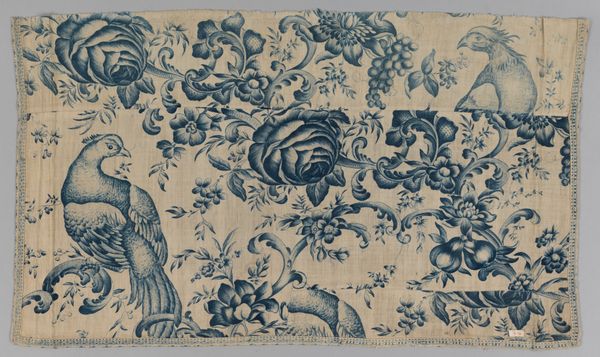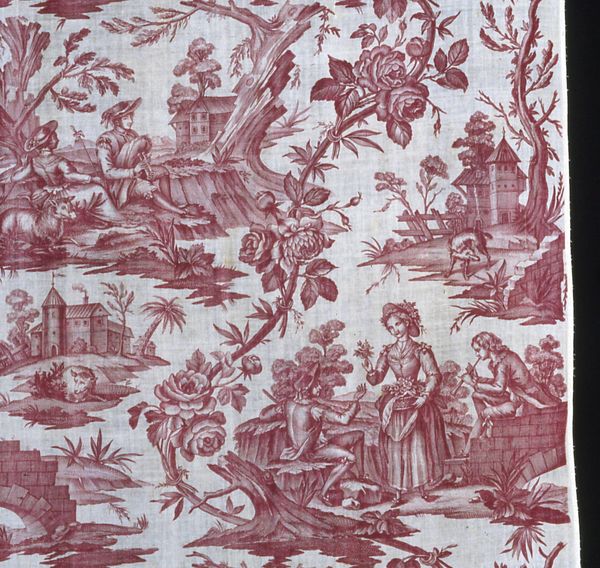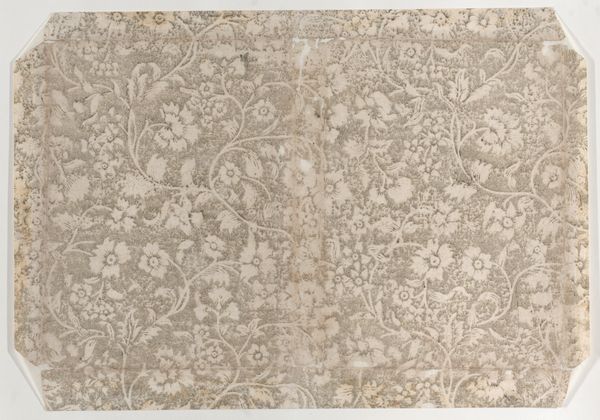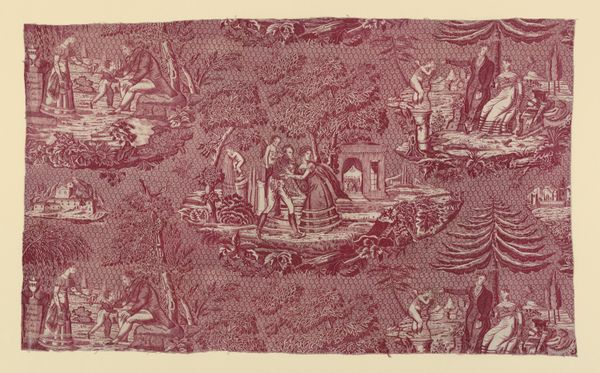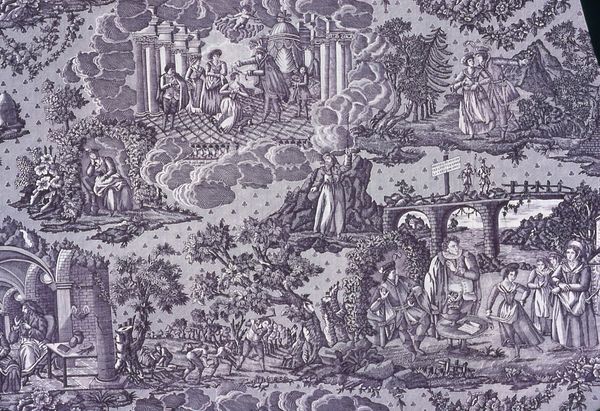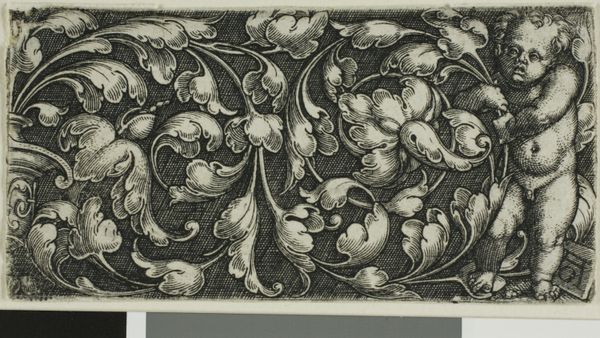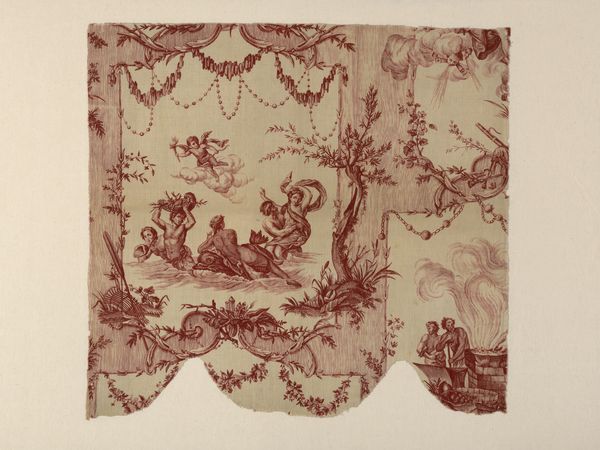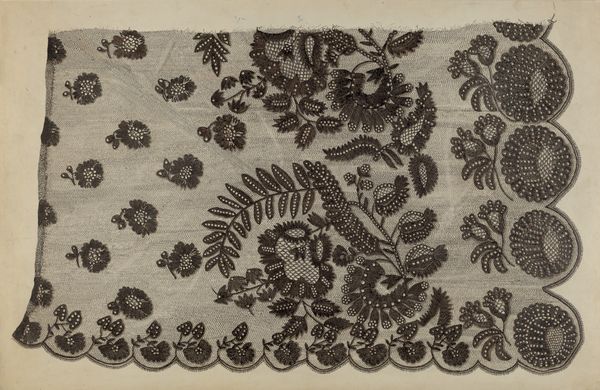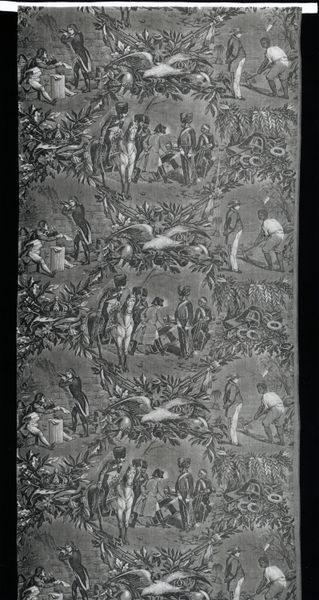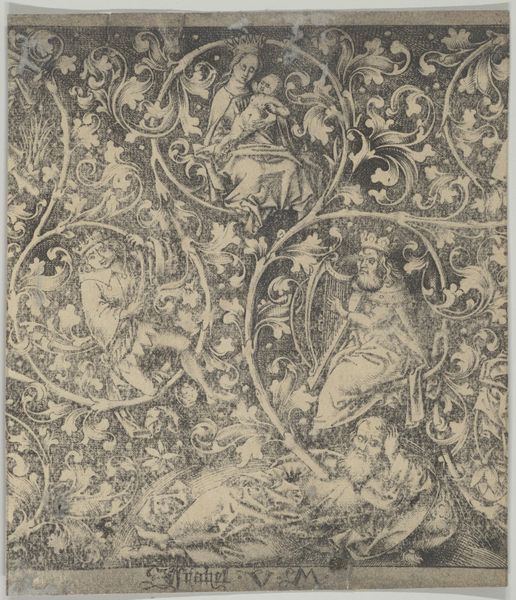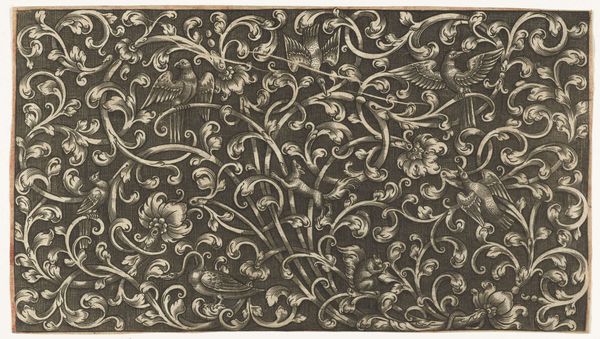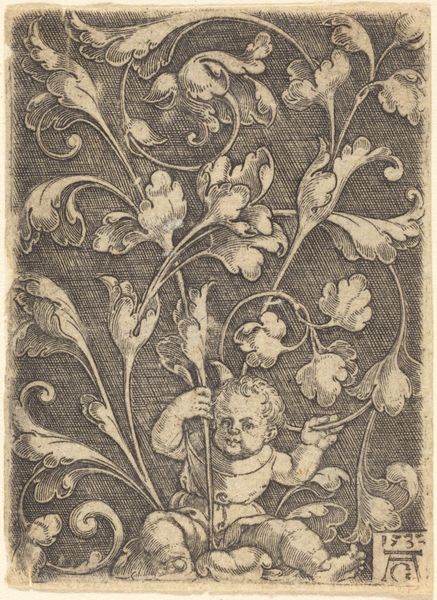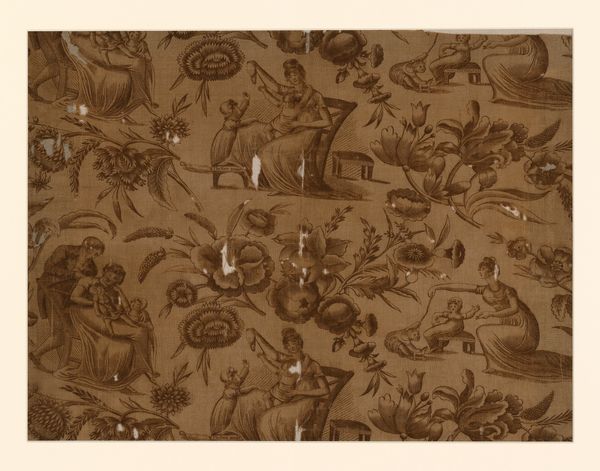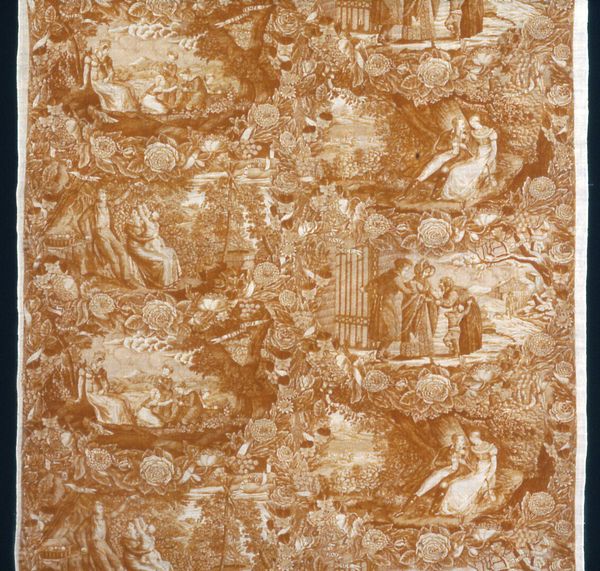
panel, textile, cotton
#
panel
#
landscape
#
textile
#
figuration
#
romanticism
#
cotton
#
decorative-art
Dimensions: 32 x 18 1/2 in. (81.28 x 46.99 cm)
Copyright: Public Domain
Curator: Ah, here's a textile curiosity! This “Panel,” from around the 19th century, is part of the decorative arts collection. Look at how it intertwines idyllic scenes with lush floral arrangements on cotton. What’s your immediate take on this, Editor? Editor: It's surprisingly romantic, isn't it? There's something dreamy about those faded vignettes nestled amongst the oversized blossoms. Like peeking into someone's memory of a perfect picnic afternoon. Curator: Indeed. Those figurative scenes, enclosed in circles, feel very deliberate against the riot of nature. Given its cotton material and pattern design, mass production for the rising middle class comes to mind. The democratization of pastoral elegance, if you will. Editor: Interesting. I’m more drawn to thinking about the labor that went into creating something so deliberately "pretty." From the cotton fields to the textile mills, those are the material realities that underpinned the creation of this so-called idyll. I'm not sure how much I can romanticize it without grappling with its own production history. Curator: Point taken! The flowers themselves are arranged almost like cameos around the figures. I love the way the roses, daisies, and what looks like hibiscus almost overwhelm the central vignettes, lending it a bit of chaos and dynamism. Editor: For me, that abundance of flora points towards a particular kind of consumption and aesthetic obsession. Floral motifs are a popular aspect of decorative culture – printed onto textiles for display, garments, etc. – and reflect material desires and industrial progress of this era. Curator: Still, can’t you feel a touch of longing embedded within the cotton fibers? A kind of lost world captured and repeated, attempting to capture something impossible – happiness itself. Editor: Maybe. For me it more profoundly illuminates the labor, means, and economics for its mass distribution, the cotton made "romantic". What was a sign of its era is today also a sign of times changed.
Comments
No comments
Be the first to comment and join the conversation on the ultimate creative platform.
